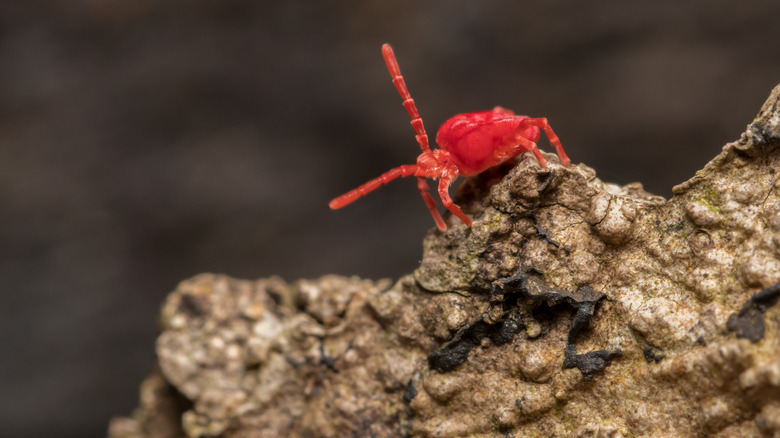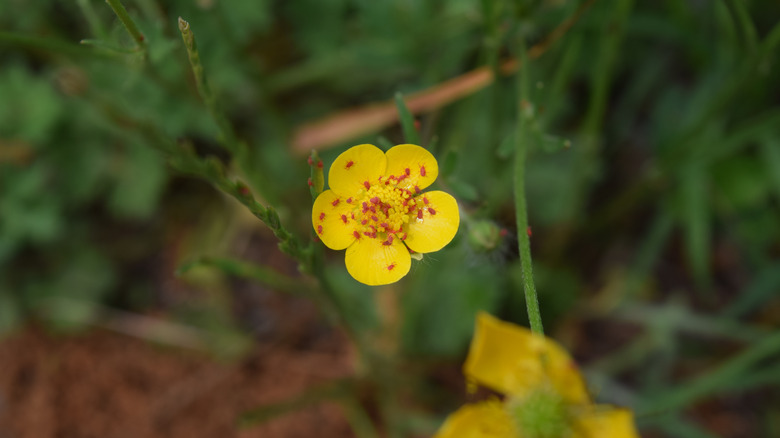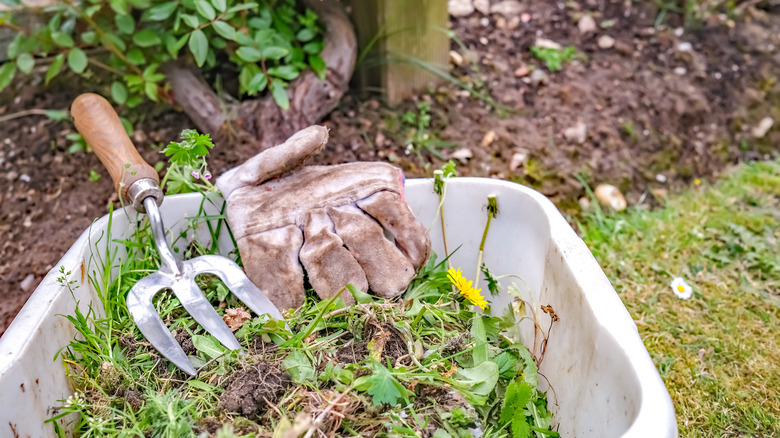An Expert's Tips On How To Banish Clover Mites For Good
One of the many tasks that come with home maintenance is taking care of any pests that may be making a home in your yard or living room. With it being estimated that 48,000 different kinds of mites roam the earth, we are bound to run into issues with them sooner or later. Entomologist Emma Grace Crumbley at Mosquito Squad explains to House Digest that "mites, in general, are arthropods in the class Arachnida," meaning that "mites are more closely related to spiders and other eight-legged arachnids than they are insects." She notes that mites boast a deep red and brown coloration, and while incredibly tiny, they travel in large swarms.
Crumbley says that depending on different mite species, each will burden our homes differently. Clover mites are one of the most commonly found mite infestations and can be identified by their bright red tints and extremely long front legs. Crumbley reports that this kind of insect feeds on plants specifically and doesn't pose direct issues for humans or animals. "Using their piercing/ sucking mouth parts, clover mites will stab at plants and drink the fluids inside," she said. "This is the primary way these arthropods get water and nutrients for survival." Given that these mites reproduce exceptionally quickly, hatching up to six generations a year, it is crucial to understand what attracts them to our homes and how to banish them for good.
Why clover mites invade our homes
To remove clover mites and permanently eradicate them from our homes, we must understand what is luring them in the first place. "Mites, like other arthropods, are exotherms, relying on the environment to regulate their body temperature and condition," Crumbley explained. "In other words, while humans can sweat when we are hot to try and cool ourselves, arthropods have to physically move to a cooler area to escape the heat." Clover mites are very active in the spring and fall when temperatures are moderate, as they don't thrive in climates that are too hot or cold. Because of this, "excessive heat, heavy rain, or sudden changes in temperature will trigger clover mites to find indoor shelter." As these mites make meals out of our lawns and gardens, our homes are their first choice for immediate shelter.
Heavily fertilized grass with rich soil are typically the culprit for bringing clover mites to your property. They are also very attracted to clover, which explains their name. While clover mites don't necessarily kill plants, they will cause discoloration as they extract fluid from the foliage. As herbivores, they won't hurt your home, but Crumbley expresses that they are a huge annoyance to have crawling around. "If you begin to see small, dark-colored, moving specs along your walls, doors, or floors, you might be witnessing a clover mite infestation," she said. "Fortunately, these mites will not survive long on their own, and they cannot reproduce indoors."
Banishing clover mites
Kicking clover mites out of your house and yard isn't exactly hard, but it may be time-consuming. A quick solution to stop them from wandering around is to vacuum them up, Crumbley reminding us to "be sure to dispose of the dryer bag or clean your vacuum out away from the home to prevent reinfestation." She warns against squishing any indoors as they can cause red staining when squashed. Crumbley also advises that while household insect repellants successfully ward off clover mites, it is essential to take long-term preventative measures in addition to short-term solutions.
"To prevent these mites from having easy access to your home, remove or relocate plants and vegetation from the sides of the house," she suggests. "Clearing the perimeter of your home makes the journey from plant to house more difficult for mites." Creating an 18 to 24-inch space between the house's siding is an adequate distance, and adding barriers such as pea gravel or mulch will only intensify the obstacle clover mites have to face if they attempt to come inside. Another route Crumbley recommends homeowners take is "mixing in plants that clover mites do not attack" to discourage them from feeding on your gardens. Some repelling plants Crumbley notes include geranium, chrysanthemum, marigold, or certain shrubs like juniper. Lastly, she instructs us to check the foundations of our homes and seal off any cracks and openings, which will be beneficial for blocking all arthropod pests, not just clover mites.


